|
Since the arrival of Blu-ray and HD streaming services, I have to admit to rarely playing discs from my still vast collection of commercial and review DVDs. But one set gets pulled out of the draw on a regular basis, and that’s the BFI’s Ghost Stories for Christmas discs. My partner adores these, and whenever we get stuck for something to watch, they’re immediately suggested. Not that I mind a bit, as I’m a huge fan of these BBC productions, an annual event that ran for several years and that gave rise to three of my favourite cinematic ghost stories. So imagine my excitement when the BFI announced that it would be releasing the first four of these films on Blu-ray in what they have teasingly titled Ghost Stories for Christmas, Volume One. That, we can safely presume, means there are more to come. Top of the list of features on the press release was the news that all four titles had been newly remastered by the BFI, and if the cynical amongst you are wondering how remastering old analogue tape programmes to HD can really improve the image quality that much, know that all of the titles in the first run of this series were shot on 16mm film, and these remasters have been sourced from the original negatives. All of the special features from those earlier discs have been included here (complete with an apology for the lower image quality), and have been joined by brand new commentary tracks for all four films by acknowledged experts in their field.
All of the films in this first volume are linked by the author of the stories on which they were based, one Montague Rhodes James, about whom I’ll have more to say in a minute. The first title, Whistle and I’ll Come to You, is technically not a Christmas Ghost Story at all but a stand-alone work made as part of the Omnibus arts documentary series and first screened on 7 May 1968, but it most effectively pointed the way for things to come. The first official Ghost Story for Christmas came when former documentary filmmaker Lawrence Gordon Clark adapted and directed The Stalls of Barchester, a single tale of the supernatural broadcast on Christmas Eve of 1971. It developed into a series when he did likewise with A Warning to the Curious the following year, and the year after he directed Lost Hearts from a screenplay by Robin Chapman. By this point, the Christmas Ghost Story had become a BBC tradition, and other titles were to follow, but that’s a tale for later volumes…
| WHISTLE AND I’LL COME TO YOU (1968) |
|
| |
"So far no cause whatever for the fear of the runner had been shown; but now there began to be seen, far up the shore, a little flicker of something light-coloured moving to and fro with great swiftness and irregularity. Rapidly growing larger, it, too, declared itself as a figure in pale, fluttering draperies, ill-defined. There was something about its motion which made Parkins very unwilling to see it at close quarters. It would stop, raise arms, bow itself toward the sand, then run stooping across the beach to the water-edge and back again; and then, rising upright, once more continue its course forward at a speed that was startling and terrifying." |
| |
Oh, Whistle, and I'll Come to You, My Lad – M.R. James |
Montague Rhodes James was born in 1862 and remains to this day one of Britain's finest writers of supernatural tales. His stories frequently have an autobiographical quality to them, often including an academic angle (James spent a good part of his adult life at King's College, Cambridge, eventually becoming Dean and later Vice-Chancellor of the University) and featuring characters who are prompted through experience to re-evaluate their previous cynicism about the supernatural, a reflection, perhaps, of James’s own detailed studies of the early history of the Bible. James was primarily a scholar, an historian and a prolific writer, and regarded his ghost stories almost as a hobby. But his use of language, his vivid descriptions and the manner in which the narratives unfold made them essential reading, and their influence on other genre writers and even film-makers has proved to be substantial. Several of his stories have been adapted for television, including by the BBC as part of the Ghost Stories for Christmas series. Big screen adaptations are rarer, the best by far being the 1957 Night of the Demon, an adaptation of James’s 1911 Casting the Runes and one of the cinema's best ever tales of the supernatural (the story was also adapted for television in 1968 as part of the series Mystery and Imagination and again in 1979 as an episode of ITV Playhouse). But of the TV adaptations, for many of us the 1968 version of Whistle and I'll Come to You still stands as the finest.

The school term has ended, and academic Professor Parkin arrives at a seaside inn on the East Anglian coast for a holiday of rambling and reading. While on one of his walks, he discovers a cemetery perched on the edge of a cliff that is in the process being reclaimed by the sea. Here he unearths an old whistle bearing a Latin inscription, which he translates and responds to, scorning its potentially supernatural overtones, but is soon given cause to question his long-held scepticism.
As noted above, Whistle and I'll Come to You was produced for the BBC's Omnibus arts programme, which is why it opens with a spoken introduction by its director, Jonathan Miller, who provides a brief overview of the author's work and outlines the nature of the tale that is about to unfold. What follows makes a few small changes to James’s original story, largely in the personality of Professor Parkin. Described by James as being "young, neat, and precise in speech," here he is almost the opposite – as played by Michael Hordern he is middle-aged, eccentric and lost in his own world, a cinematic archetype of a Public School Professor. In most other respects, however, the film is largely faithful to the original text.
To a modern audience that has come to expect a big twist at the end of their ghost stories and is accustomed to being told loudly through music and editing when it's time to feel scared, the more subtle and uncluttered narrative of Whistle and I'll Come to You may at first glance feel a little primitive. But this simplicity allows Miller and Hordern the scope they need to initially develop the film as a character study, with Dick Bush's immaculately framed camera observing Parkin with almost microscopic precision. The film is told very much from Parkin's point of view, and aside from a foreshadowing opening scene of a bed being made at the hotel, it never shows us anything that he cannot see, hear or – in a particularly unsettling sequence – dream.
Hordern is an absolute joy to watch here, investing so much into every line and action that the film demands repeated viewing just to observe him at work, whether it be his breakfast mutterings, his philosophical musings on seemingly simple questions, or the jovial manner in which he eats his packed lunch. There are few other characters of real significance in the story, but all are well played, and as the hotel proprietor, George Woodbridge has an irresistibly funny scene in which he breathlessly mumbles a series of incoherent noises that stand in for a description of the facilities, punctuated by odd clear words like 'bathroom' or 'dinner at eight', all of which Parkin appears to understand.
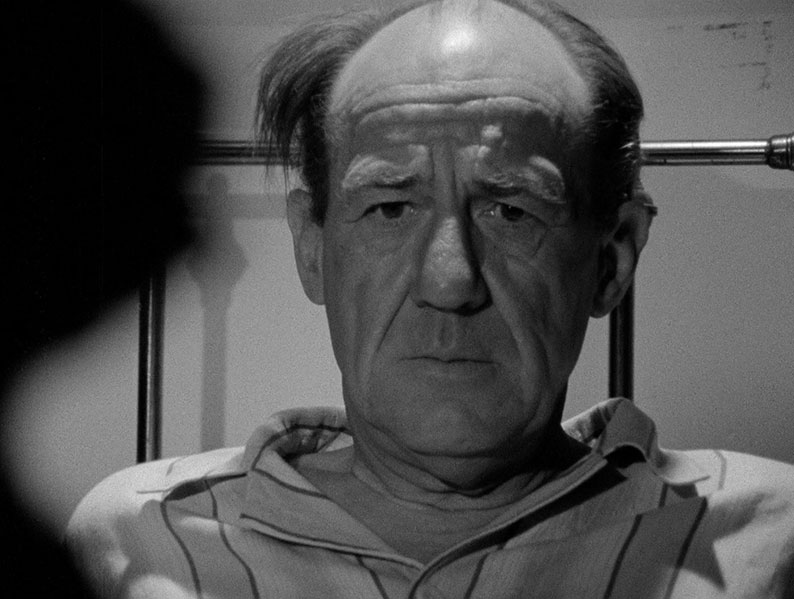
Even at only 42 minutes in length, the film is in no hurry. With the pared-down plot and only one major character, Dr. Miller – a producer and director of considerable standing who was a theatre and opera director of some considerable standing and was one of the original members of Beyond the Fringe – is able to really get inside Parkin's head. In this respect, he makes excellent used of his lead actor and some striking locations to create an unnerving sense of a disrupted normality in which undefined dangers seem to be stalking Parkin even in daylight. This is brought home through Miller's refusal to over-dramatise key moments, with the discovery of the whistle and the reading of its inscription presented in an almost everyday manner, and no dramatic music or creepy camera movements to hammer home their significance. With no score to lean on, a sense of genuine menace is created solely through camera placement, Hordern's facial expressions, and a chilling and innovative use of sound effects. These range from the terrifying rustling of sheets in a supposedly unoccupied bed, to the sharp noise that pulls Parkins out of his nightmare, a trick that was effectively repurposed five years later to equally jarring effect in William Friedkin's standard-setting The Exorcist.
The case has been made by several commentators for reading Miller’s interpretation of the story as not a ghost story at all, but a study of a man suffering a mental breakdown and casting the apparitions as figments of his disintegrating mind. Although I’m sympathetic to this view, it’s one I’ve always disagreed with (hop ahead to the next paragraph if you want to avoid a massive spoiler). At the very start of the film, Miller states categorically that this is a tale of the supernatural, and where some regard Parkin’s response in the final scene to what he has witnessed as the culmination of his breakdown, for me it has always had a different reading. His shocked regression into childhood thumb-sucking and the very way he stares ahead, shakes his head and repeats the words, “Oh no…” feel more like the reaction of a man for whom all logic and the scientific certainty – the very foundations on which his life has been built – have just collapsed before his very eyes. It’s a reading that could easily be inverted to cast Parkin, for example, as a religious man whose understanding of the world is destroyed when he is confronted with evidence that there is no God and that death really is the end of existence, a reading that would likely be dear to the heart of a committed free thinker like Jonathan Miller.
For this humble viewer, Whistle and I'll Come to You remains a marvellously executed tale of the supernatural, a genuinely chilling ghost story that also delivers as a fascinating character study. It may lack the narrative complexity and big surprise ending of more recent cinematic genre outings, but it still shines in its excellent central performance, its canny direction, its increasingly unsettling sense of foreboding, and a final scene that, while refusing to provide pat explanations or even a real conclusion, still manages to send serious shivers up my spine on every viewing.
| THE STALLS OF BARCHESTER (1971) |
|
| |
“Here again I must note a matter I do not understand. I am much troubled in sleep. No definite image presented itself, but I was pursued by the very vivid impression that wet lips were whispering into my ear with great rapidity and emphasis for some time together. After this, I suppose, I fell asleep, but was awakened with a start by a feeling as if a hand were laid on my shoulder.” |
| |
The Stalls of Barchester Cathedral – M.R. James |
The Stalls of Barchester is the first official entry in what was to become the Ghost Stories for Christmas series and was adapted from M.R. James’s story The Stalls of Barchester Cathedral, which was first published as part of the More Ghost Stories collection in 1911. It takes its time to establish its supernatural credentials and is not quite as creepy as the other titles on this disc, but it's still an elegantly executed work with a sprinkling of unsettling sequences, and very effectively sets the style for BBC Christmas ghost stories to come.

Dr. Black (Clive Swift) has landed the job of cataloguing the library at Barchester Cathedral, a task that he quickly tires of due to the dullness of the material he is required to read. It's then that the librarian remembers a chest that was bequeathed to the Cathedral sixty years earlier. Inside it the two men discover the diary of one Dr. Haynes (Robert Hardy), which outlines his arrival in Barchester and his eventual ascension to the position of Archdeacon after his predecessor, the elderly Archdeacon Pulteney (Harold Bennett), takes a fatal fall down the stairs of his house. Although never openly admitted, the diary suggests that Pulteney's death was the result of foul play on the ambitious Haynes' part, but following his ordination, the new Archdeacon is plagued by strange sounds and unsettling visions.
Unfolding as a dual timeline, with Haynes' diaries dramatised in flashback, the film is over a third of the way in before the first signs of supernatural activity put in an appearance. Patience is thus required, but compensation aplenty is provided by Haynes' growing frustration at Pulteney's stubborn longevity, which is wonderfully conveyed through smart use of shot repetition and Hardy's gradual transformation from cordial politeness to eye-rolling frustration.
It's when Haynes starts hearing noises and having unusual visions that the consistency falters a little, although much of the blame for this can be laid at the feet of changing times and the repeated use of some of the elements here in subsequent genre films and TV. The black cat that scratches and cries in the night is the key offender here, having been recycled since by any number of giallo and Poe-influenced films, while the voices that Haynes hears at night would probably have been more unsettling if they didn't consist solely of dialogue from early scenes, making them play more like memories than hauntings.
Yet elsewhere a very real sense of unease is created through the simplest of techniques: the scuttling sound that suggests a large and active rodent; the focus on Haynes' worried and candlelit face as makes his way downstairs at night; the footsteps that echo and stalk him through the cathedral halls. The seat-jumping favourite of having a character check behind him and then get a start when he turns back is given an early outing here, and there's a splendidly executed frisson where Haynes has his back to the camera and... no, I'm not about to spoil that one.
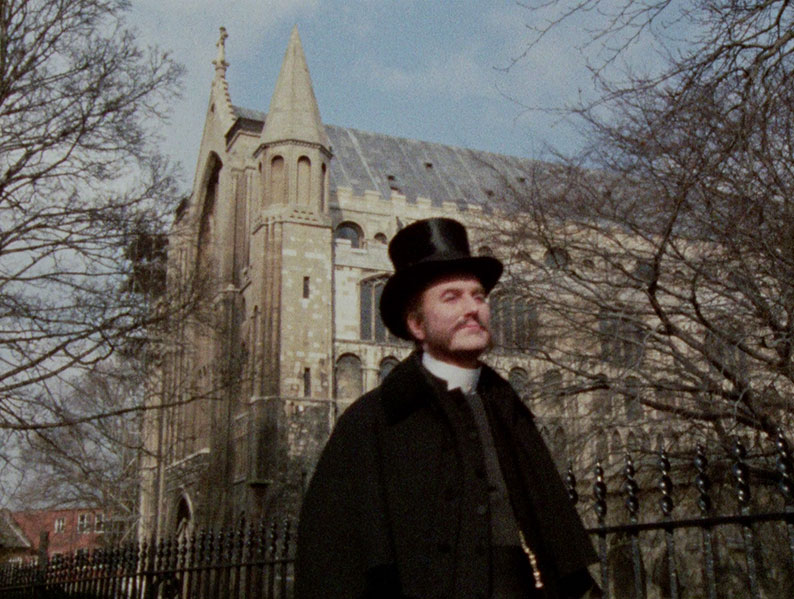
Haynes' inevitable demise lacks the drama and shock value it may once have had, and the wooden carving that transforms into a hooded skull is an image that now feels creakily old-hat. But there's still something oddly disconcerting about the idea of furniture carved out of wood from something known as The Hanging Tree by a man known as Austin the Twice-Born.
| A WARNING TO THE CURIOUS (1972) |
|
| |
“As we neared it, Henry Long felt, and I felt too, that there were what I can only call dim presences waiting for us, as well as a far more actual one attending us. Of Paxton's agitation all this time I can give you no adequate picture: he breathed like a hunted beast, and we could not either of us look at his face.” |
| |
A Warning to the Curious – M.R. James |
Even by the standards of M.R. James, A Warning to the Curious is a belter of a title for a cautionary tale of the supernatural, a subtle suggestion of the potentially dire consequences of sticking your nose in where it doesn't belong. In this particular case the warning is a little misleading, as it's the theft of an ancient relic rather than curiosity about it that potentially invites severe otherworldly punishment.
In the region surrounding the Norfolk coastal town of Seaburg, legend has it that three Anglo Saxon crowns were once buried to protect England from invasion. The first was plundered by thieves, the second lost to the sea, but the third remains hidden somewhere beneath the local turf. For five generations, the members of a single family have dedicated their lives to protecting it, but the last of the line, William Ager, died without leaving an heir. Having read of the legend, middle-aged former clerk and amateur archaeologist Paxton (Peter Vaughan) arrives in Seaburg with the intention of locating and retrieving the crown, unaware that the spirit of William Ager continues to guard it from beyond the grave.
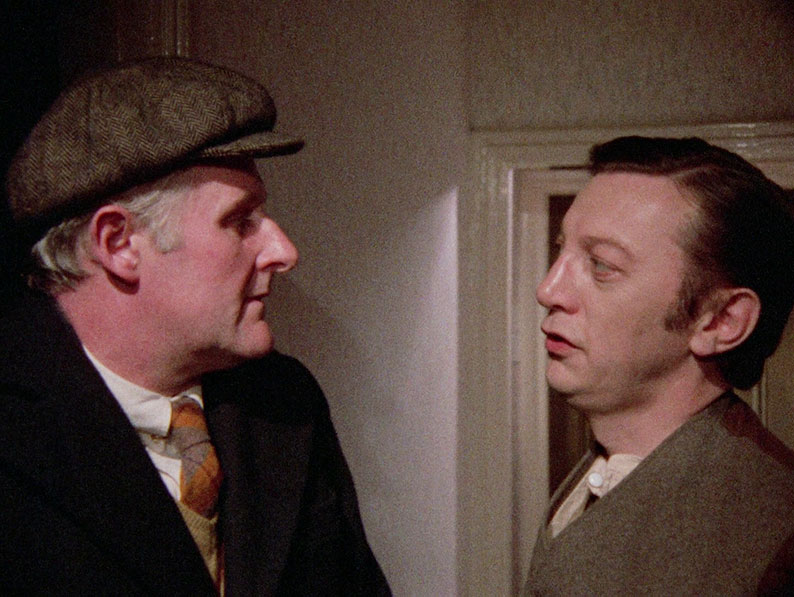
Surprisingly, perhaps, given writer-director Lawrence Gordon Clarke's fondness for the writings of M.R. James, the film version of A Warning to the Curious makes some significant changes to the original text, particularly in the character and intentions of Paxton. In the story, he is a young innocent who stumbles across the legend by chance whilst making architectural studies of local churches, whereas in the film he is an older, more secretive man who arrives in Seaburg with the very specific intention of locating and retrieving the crown. The film also abandons James’s layered approach to storytelling in favour of a more linear approach, but these alterations in no way detract from or dilute what made the story work so well in the first place. The only addition that has been rendered a tad familiar by time is a new prologue set 12 years before Paxton’s arrival in which an archaeologist is slaughtered whilst in the process of digging up the protected crown. It’s the sort of preview of the threat to come that, while relatively fresh back in 1972, has since become a staple component of modern film horror.
But this is a small gripe when everything else works as well as it does here. Literary scholars have drawn parallels between the plots of A Warning to the Curious and Oh, Whistle, and I'll Come to You, My Lad, both of which involve the unearthing of an ancient object by an outsider to the region, who then finds himself being stalked by a potentially hostile entity. It's a bond cemented by the film adaptations, all three of which (I’m including both versions of Whistle) aged their young protagonists by at least thirty years and cast respected and experienced older actors in the roles, each of whom brought more depth to their characters than they had on the page. Here, the excellent Peter Vaughan invests Paxton with a level of driven determination that, combined with the 30s depression-era setting, his recent redundancy, and his disdain for academically trained archaeologists, provides a solid and socially relevant motivation for his actions.
As with Professor Parkin in Jonathan Miller's 1968 version of Whistle and I'll Come to You, there's a tangible sense that once Paxton possesses the object that he has been seeking, he is never subsequently alone. The difference here lies in the screen time devoted to the retrieval of the catalytical artefact. In Whistle its discovery is handled quickly and without drama, whereas here the unearthing of the crown is the film's longest scene, one whose building sense of foreboding and use of facial close-ups, coupled with Paxton's mounting fear of what waits just beyond the light of his lantern, is genuinely unnerving. Unlike Parkin, Paxton is at least able to share his fears with a sympathetic third party, none other than Dr. Black from The Stalls of Barchester (again played by Clive Swift), whose relaxing holiday is severely disrupted when he becomes inadvertently caught up in Paxton's predicament.
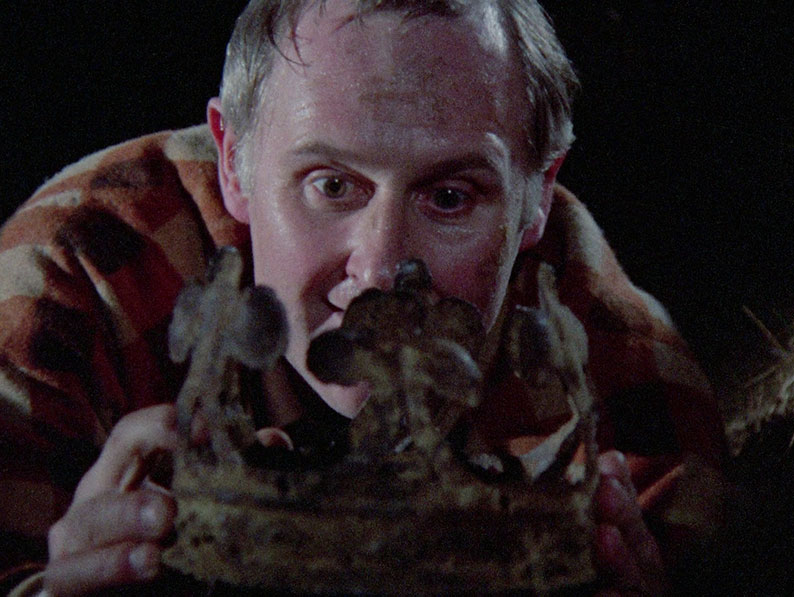
The ghost of William Ager does prove to be an inconsistent stalker, alternately watching, walking alongside and aggressively chasing Paxton, a solid apparition one minute and invisible the next. This disconcerting unpredictability gives rise to two of the film's most eerily effective scenes. The first occurs when a train guard opens the door to Paxton's compartment for a boarding passenger, only to then realise that there is no-one there after all, a moment that is later revisited in the splendidly foreboding final scene. The second takes place the following evening when Paxton's room is plunged into darkness and the light from his rolling torch reveals the hunched figure of Ager, who slowly begins to rise to look back at Paxton before the room is once again plunged into blackness, as scary a sequence as I've seen in a made-for-TV ghost story.
A Warning to the Curious showcases the BBC's Ghost Stories for Christmas slot at the top of its game. An overuse of a signature high-pitched electronic crescendo from avant-garde composer Gyorgi Ligerti's Atmospheres does come close to overstating the threat, but in the end never seriously detracts from what, even all these years after it was first screened, remains a gripping and genuinely chilling slice of supernatural storytelling.
| |
“As he looked upon it, a distant, almost inaudible moan seemed to issue from its lips, and the arms began to stir. The terror of the sight forced Stephen backwards and he awoke to the fact that he was indeed standing on the cold boarded floor of the passage in the full light of the moon. With a courage which I do not think can be common among boys of his age, he went to the door of the bathroom to ascertain if the figure of his dreams were really there.” |
| |
Lost Hearts – M.R. James |
One of my favourite things about Lost Hearts is, rather annoyingly, something I can't really discuss without spoiling the story's biggest and frankly most startling surprise. I can't even allude to it without prompting a number of you to second guess what I'm trying to avoid revealing. And for maximum impact, this is one time when you really should go in cold.
It begins with 11-year-old Stephen (Simon Gipps-Kent), dressed in respectable clothing and a Brunelian top hat, being transported through the Lincolnshire countryside to the stately home of his elderly cousin, Mr. Abney (Joseph O'Conor). As his carriage approaches the hall, Stephen briefly sees two wan-looking children (Christopher Davis and Michelle Foster) standing in a field, their arms slowly arching in a synchronised wave. Seconds later they are gone.
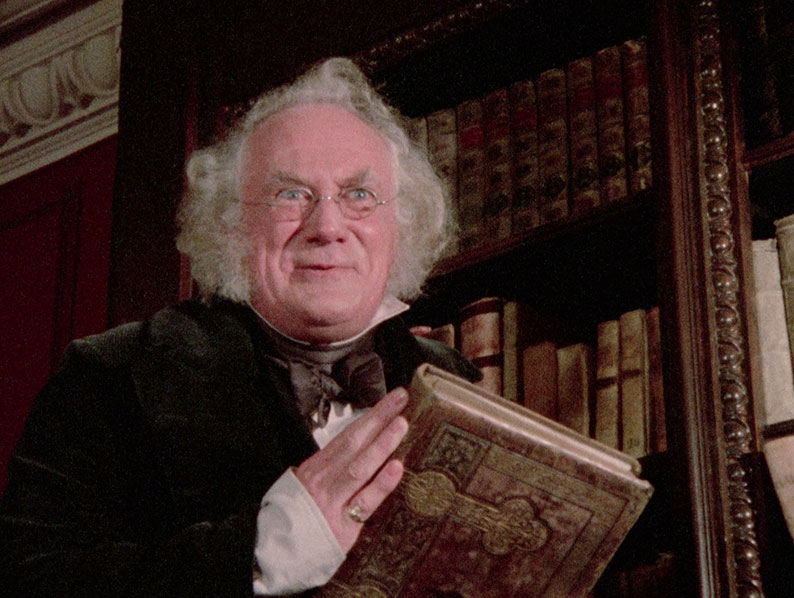
On reaching the hall, Stephen is greeted warmly by his cheerfully eccentric cousin, who seems particularly keen to confirm the boy’s age and the precise date of his upcoming twelfth birthday. Stephen also learns that he is not the first child to stay at the Abbey, but that the previous two visitors – a girl named Phoebe and a boy named Giovanni – both mysteriously disappeared. The presumption at the time was that Phoebe was taken by travellers and Giovanni ran away, but as Stephen explores the grounds he repeatedly catches sight of a boy and a girl who may well be the ghosts of the two missing children.
And in terms of plot, that's all you'll get from me. It all feels quaintly old-fashioned and, by modern standards at least, not particularly threatening, with the ghosts standing on the periphery, their intentions teasingly uncertain. In one intriguing instance, Stephen is walking with Mr. Abney and spots them looking down at him from an upstairs window. He is about to call out when they raise their fingers to their lips in a synchronised "shhh" gesture, which prompts him to instead remain silent about what he has just seen. It's later, when the spectral Giovanni enters Stephen's room at night, that their presence takes an altogether more sinister turn, with a seemingly hypnotised Stephen pulled from his slumber by the eerie drone and jangle of the hurdy-gurdy that the mortal Giovanni once treasured. It's genuinely unnerving sequence that builds to a splendidly handled (and quite graphic) shock revelation, the full implications of which only become clear in the scenes that follow.
Lost Hearts relies heavily on the creepiness of its two young ghosts, which has been impacted just a little by the passing of time. Certainly when they're grinning and waggling their overlong fingernails, there is a sense of children play-acting at being scary and not quite pulling it off, but when their movements fall into the rhythm of the hurdy-gurdy music in a slow dance of death, the effect is considerably more disconcerting. And while their deathly make-up may well have been influenced just a tad by Night of the Living Dead, it also uncannily anticipates a look that was to become popular for ghostly children in the later J-horror cycle.

Young Simon Gipps-Kent does rather well as Stephen, but it's Joseph O'Conor who effectively steals the film as the cheerful Mr. Abney, combining a boffin's eccentricity with the warmth of a lively uncle to create a character seemingly incapable of harming another being, but who is clearly up to something from the moment we first meet him. The passing of time, of course, has provided some pointers here, and there will surely be few for whom the prospect of an old man inviting wayward young orphans back to his isolated house to stay does not set off a small bell of alarm.
All four films in this 3-disc Blu-ray set have been remastered at 2K resolution from the original 16mm camera negatives held by the BBC Archive and are presented in their original aspect ratio of 1.33:1.
I’ll admit that my highest hopes here were for Whistle and I’ll Come to You, as this was shot on fine grain black-and-white stock and thus had the potential to look rather special in HD. I wasn’t disappointed. The film looks rather lovely here, with an excellent level of detail (there are close-ups of Michael Hordern where even the texture of the skin on his face is clearly defined) and splendidly pitched contrast, with always crisp black levels and good shadow detail. There are some minor instances of damage remaining, and some shots are noticeably softer than others – including a couple where it seems the camera focus was just a tad off (in one case, the background is sharper than the subject) – but on the whole this is an excellent remaster that does the film proud.
With The Stalls of Barchester, the series moved to colour, and I suspect that a high speed 16mm stock was used here to better facilitate filming on locations that could not be easily lit to the levels possible in the studio. Today, when even smartphones can effortlessly produce clean and detailed results in low light, it’s easy to forget how challenging these situations were for those shooting on film in the early 1970s. The result is a coarser and more visible film grain, which does take the edge off the sharpness when compared to the fine grain image of Whistle and I’ll Come to You, but this is still a significant upgrade over the SD image on the previous DVD. At its best – particularly on facial close-ups – the detail is very clearly defined, and the picture is consistently stable and clean. In the daylight scenes, the contrast is well balanced, though when the light levels drop it harshens somewhat, with the inky black levels sucking in quite a bit of the surrounding detail. This was also a feature of the DVD transfer, and as this HD master was sourced from the original negative, we have to assume this was a planned feature of John McGlashan’s cinematography.
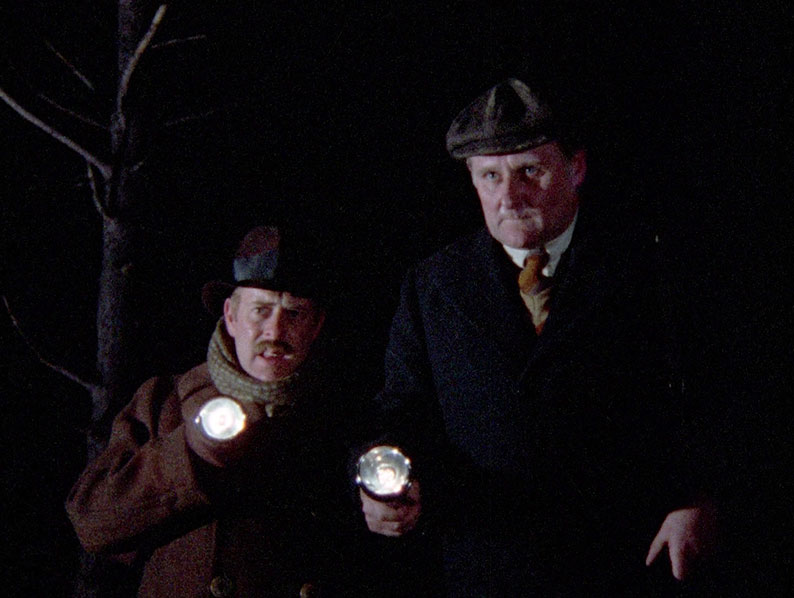
The film grain is also clearly visible on the transfer of A Warning to the Curious, but the contrast is nicely balanced here and a lot less aggressive in the darker scenes than on The Stalls of Barchester. The colour palette has a naturalistic feel, with the film’s ominous tone created through the costume design, art direction and the isolation of the exterior locations. When brighter colours do put in a rare appearance, they are attractively rendered. Detail is once again noticeably crisper than on the DVD and at its sharpest on close-ups, and the solid black levels ensure that Paxton’s torchlight night-time archaeological trips are suitably unnerving.
It's a similar story for Lost Hearts, where the contrast is well balanced, the black levels solid, the colours pleasingly rendered, and the film grain as visible as in the preceding two titles. The image is once again crisper in some shots than others, but at its best it impresses, and once again a noticeable upgrade on the previous DVD. Dust spots are rare here, and the image is always stable in frame.
All four titles feature Linear PCM 2.0 dual mono soundtracks, and all are for the most part clean, with dialogue always clear and music often nicely reproduced, particularly that creepy hurdy-gurdy tune in Lost Hearts. The booklet states that there are minor instances of water damage on the soundtrack of Whistle and I’ll Come to You, but I barely noticed them. There is also a noticeable hum under the scene in A Warning to the Curious when Paxton visits the antiques shop, but again this is not a major issue.
Optional English subtitles for the deaf and hearing impaired have been included.
Commentaries and the 2020 adaptation of Whistle and I’ll Come to You aside, all of the special features have been sourced from the previous BFI DVD releases and are in standard definition.
Disc 1
Audio Commentary on ‘Whistle and I’ll Come to You’ by Jon Dear
When I read that there would be a commentary track for Whistle and I’ll Come to You, I have to admit to having specific hopes for its content, and TV historian Jon Dear meets them in spades, providing a wealth of background detail on the production rather than analytically deconstructing every scene. We get information on the actors, writer-director Jonathan Miller, the locations (many of which Dear is personally familiar with), cameraman Dick Bush (even down to the specific cameras he used), the popularity of spiritualism in James’s day, the initial reception to the film, and more. He reveals how the ghostly apparition on the beach was created and provides a more accurate translation of the Latin message on the whistle than the one in the film – inflection apparently really matters here.
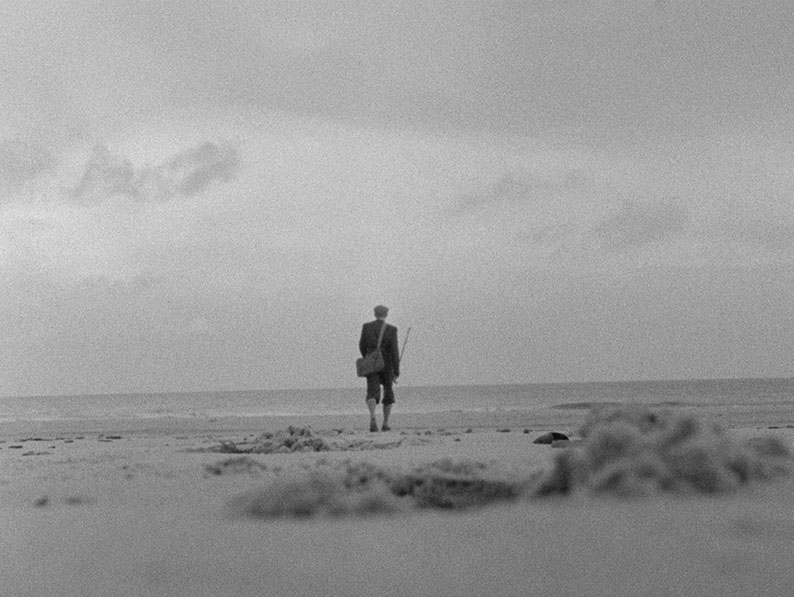
Jonathan Miller and Christopher Frayling Interview (3:24)
Two very short clips of interviews with Jonathan Miller and Christopher Frayling – for my money two of the most intelligent and compelling interviewees on the planet – that were not used in David Thompson's BBC Arena profile of Miller, which was first broadcast in March of 2010. Miller unsurprisingly dismisses the whole concept of the supernatural and reveals that it was he who encouraged Michael Hordern to adopt his "philosophical" mode of speech (something he then demonstrates in what almost plays like an impersonation of Hordern's performance), while the ever-impressive Frayling absolutely nails one of the things that makes the film work as well as it does when he describes its ghosts as being "in the corner of the retina."
Neil Brand Reads MR James’s Original Story (41:52)
Neil Brand provides a nicely animated reading of the story on which Miller’s film is based, and unless you have a major aversion to someone else supplying voices to characters you prefer to create in your head, this is most enjoyable listen. It enables those new to James’s work to judge how both adaptations compare to the original text, and intriguingly, despite some differences between the original story and Miller's adaptation, the reading runs almost the exact same length as the film, being just 18 seconds shorter. It thus makes perfect sense to have it running under the film as a second commentary track.
Ramsey Campbell on MR James (15:37)
I can’t help suspecting that when this special feature was commissioned for the 2010 DVD, respected horror author Ramsay Campbell offered to film himself on his own camcorder. This may explain why he is seated so that his face is in shadow, and the sound was appears to have been recorded with the on-camera mic – the acoustics of the room are less than ideal, and there is the sort of hum running quietly in the background that I tend to associate with camera noise. That aside, Campbell does provide a useful history of James’s work and his influence on later authors, as well as reading many extracts from key works by James and other notable writers. Campbell is no actor, and his readings are a little dry here, but his analysis of Miller's film adaptation is well worth hearing, and his very Freudian reading of one scene should raise a few eyebrows.
Ramsey Campbell Reads ‘The Guide’ (26:39)
Campbell reads his own story, The Guide, which directly references James’s work. This was clearly shot at the same time as the introduction, and while Campbell is more animated in his reading here, the same problems with room acoustics remain. Attempts to provide visual variety with occasional cutaways of the book being read or imagery described (wheat in the wind, landscapes, etc.) add little, and the introduction of an oscillating sinister synthesiser note is equally ineffective. It does the job, but it really is worth getting your hands on the story and reading it yourself.
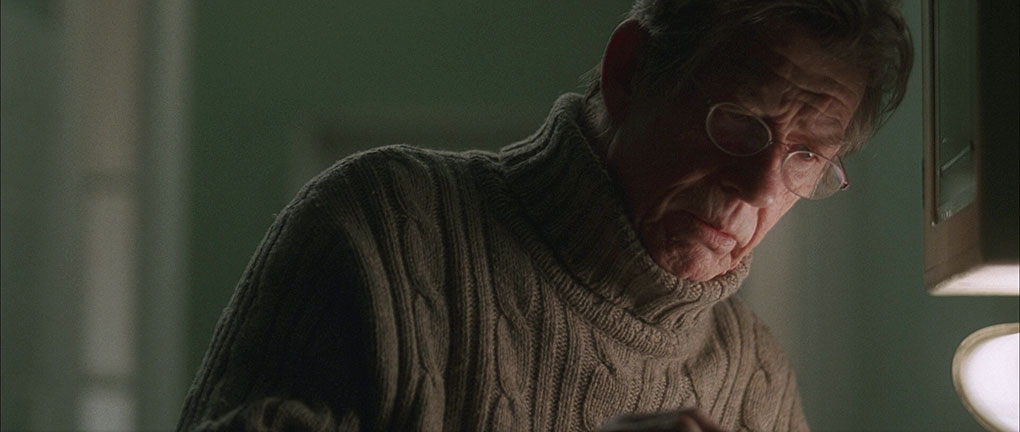
Whistle and I’ll Come to You (2010) (51:59)
When the Hollywood remake machine really got going a few years ago, I remember my partner asking me why they only ever chose to remake films that didn't need remaking instead of ones that had botched up a decent idea. It's about money, of course, and it's long since been established that you've an easier sell if you're trading on an already famous name. The same principle theoretically applies to television, at least if you're selling advertising space, but when it comes to the BBC, which in theory is not required to bow to the non-creative demands of companies hawking products, then the motives are less clear. I, for one, was certainly a little bemused by the decision to remake what remains to this day the finest made-for-TV ghost story. On the surface, there seemed to be no good reason for it beyond producing a version that was in colour, set in modern times, and whose image filled the by-then standard 16:9 frame (which it doesn't, as it happens, having a 2.35:1 aspect ratio). But I was nonetheless intrigued. A lot of film horror has washed under the bridge since Jonathan Miller's superb 1968 TV chiller, and it was just possible that a new take could still prove effective if it approached the source material from a different angle. It certainly does that.
Where Miller's adaptation stuck largely to James’s original text, the newer film, from writer Neil Cross and director Andy De Emmony, uses only the bare bones of the story and then goes its own way with it. A bold move perhaps, but what makes the written word and Miller's adaptation work as well as it does is not down solely to a few key components, but the manner in which they combine and unfold, and the unsettling ambiguity of the possible threat. By clearly defining the supernatural force that so terrorises the 2010 Parkin, Cross and Emmony strip away one of the very things that made the story so unnerving in the first place – its inexplicability. Screenwriter Evan Hunter has famously complained about Hitchcock's decision not to explain why the title creatures in The Birds suddenly turned on humans, but it's precisely that ambiguity that continues to make that film so terrifying, denying the audience, as it does, the psychological safety net of being able to question the plausibility of the cause.
The new Parkin diverges even further from the original text than Michael Hordern's eccentric professor. Here he is a married man in late middle-age, and his isolation is not self-imposed but the result of his wife's steadily deteriorating dementia. In the opening scene, he is shown admitting her to a care home whose identically dressed occupants sit in a dimly lit room in semi-comatose rows, like subjects for experimentation in a dystopian science fiction drama. The holiday he takes is thus less a vacation than an opportunity to reflect and come to terms with his wife's illness, which provides a perfectly plausible explanation for the off-season emptiness of the hotel in which he stays. That the story has been relocated from East Anglia to Devon is never an issue, but that the object Parkin finds is a ring rather than a whistle most definitely is. With nothing to blow into to summon up the spirit, the title is effectively robbed of its meaning and has to be justified instead by having Parkin whisper the words into his wife's ear in the manner a fond poem from their youth. And despite the object’s symbolic significance in relation to Parkin’s bond to his wife, I can't be the only one who associates gold rings bearing inscriptions more with J.R.R. Tolkien than M.R. James.
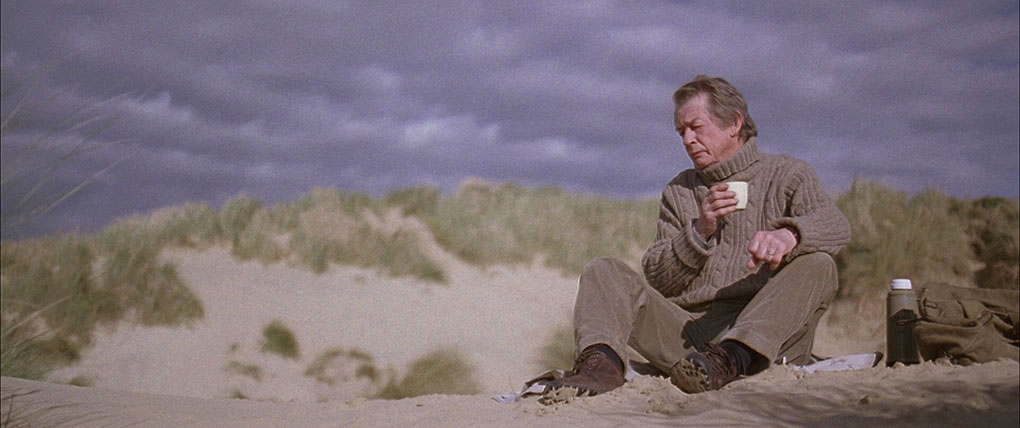
From this point on, the film is in largely familiar haunted house territory, with a nightlight that repeatedly switches itself off of its own accord, an unflattering bust that seems to watch Parkin sleep, and an unseen figure that attempts to enter his room at night by loudly and aggressively rattling and banging the door. It's that last one that best symbolises the film's failure to recognise was made its source material so effective, with the troubling but too-familiar monster beyond the door – a seriously scaled down version of a terrifying sequence in Robert Wise's seminal The Haunting – no match for the original's more frightening suggestion that the entity was entering Parkin's room at night and sleeping in the adjacent bed.
On the plus side, John Hurt expertly captures the loneliness of a man facing a future without the woman who has been his companion for most of his adult life. He wears his unhappiness like an oppressively heavy overcoat, a mood externalised through the hotel's dark wooden panelling and Rob Hardy's atmospheric but gloomy and often colour-drained and soft-contrast cinematography. That said, the lack of variance in mood ultimately works against Hurt's otherwise impressively understated performance, making his incarnation of Parkin far less arresting than Michael Hordern's glorious ball of professorial eccentricity, one whose twitchy mannerisms and contemplative delivery enlivened and textured even the quietest of scenes.
Despite its penetrating melancholia and some fine location work (the West Country beach here is as bleak and unwelcoming as the hotel in which Parkin is the sole guest), for me, this interpretation of the story sits deep in the original's shadow on pretty much every count. It trades in many of the things that so distinguished Miller's film for well-worn genre motifs, right down to the rapid-fire editing and heavily symbolic imagery of the dream sequences, and the use of music to more clearly indicate when and how we should react at any one time. As horror scores go, the almost avant-garde one here by Nick Green and Tristin Norwell is definitely unsettling, but its application still feels overstated when compared to what Miller achieved solely with silence and sound effects. But for me, the biggest let-down has to be the climax, which dispenses with the original's disturbing ambiguity in favour of something too determined to explain itself, too explicit in its symbolism and too tainted by J-horror tropes to prompt more than a weary groan on my part. Others will disagree and indeed some have in the special features of this very set, and I'm fine with that. I'm really glad this version has been included and there are still aspects of it that I admire, and if the film as a whole works better for you than it does for me, it only adds further value to an already remarkable collection.
Disc 2
Audio Commentary for ‘The Stalls of Barchester by Kim Newman and Sean Hogan
Writer and film critic Kim Newman and writer and filmmaker Sean Hogan team up for an unsurprisingly energetic look at The Stalls of Barchester, praising its strengths but also identifying the elements that don’t work as well. They suggest a solid reason for why this film is not as scary as some of the others in the series, note that it has more humour than the later entries, and even suggest that Robert Hardy aside, it’s cast a bit like a sitcom. Newman recalls seeing it when it was first broadcast, and an interesting discussion unfolds about the experience of watching TV horror in the days before home video recorders, when a brief glimpse of something disturbing stayed with you because of what your imagination convinced you that you might have seen. I’m just scratching the surface of the busy and consistently engaging conversation that takes place here.
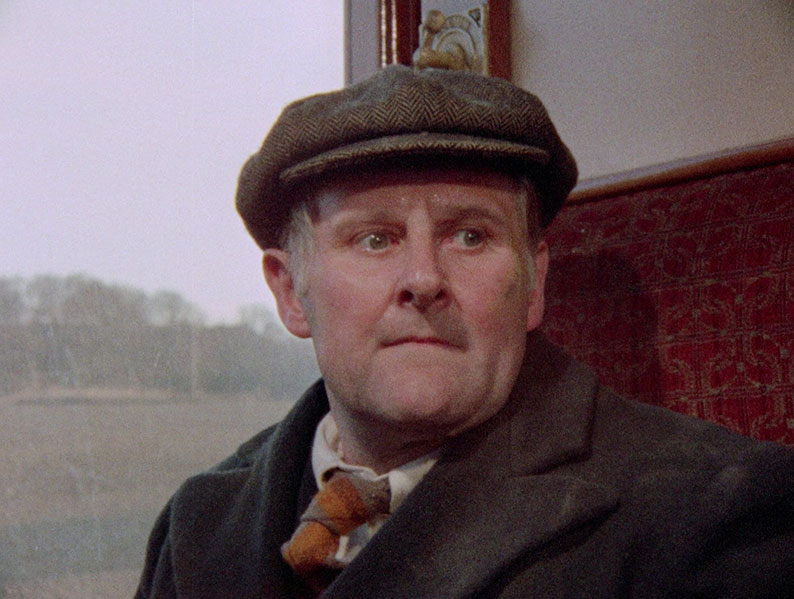
Audio Commentary for ‘A Warning to the Curious’ by Jon Dear
Jon Dear returns for another information-packed look at A Warning to the Curious, providing details on the actors, the locations, director Lawrence Gordon Clark’s preference for visual storytelling over spoken exposition, the social issues that dominated British society in 1972 and how they fed into TV drama, and much more. It’s a consistently fascinating and informative listen, but my favourite moments come when Dear momentarily breaks from his unwritten script to emotionally respond to the film or his reference material. As Paxton’s torch lights up the trees in dense woodland in the darkness of night, he suddenly blurts out, “Ooohhh! That is genuinely terrifying!” before adding an apologetic “sorry” for this outburst, and when reading a summary of some of the more negative audience responses to the film (it was generally well received), he suddenly barks, “God, that’s rubbish!” Another very fine commentary.
Introduction to ‘The Stalls of Barchester’ by Lawrence Gordon Clark (9:34)
The supremely affable Clark, who directed seven of the BBC's Ghost Story for Christmas films, including three of the titles here, talks about how The Stalls of Barchester allowed him to make the move from documentary to drama, his love of the writings of M.R. James, selecting his main location, casting Robert Hardy (also an M.R. James fan), and the importance of being able to frighten your audience.
Introduction to ‘A Warning to the Curious’ by Lawrence Gordon Clark (12:08)
Here Clark discusses finding the right locations, the advantages of being a writer-producer-director, the influence of Hitchcock and silent cinema, playing with light and landscape, getting the right actors, and the alterations made to the original story.
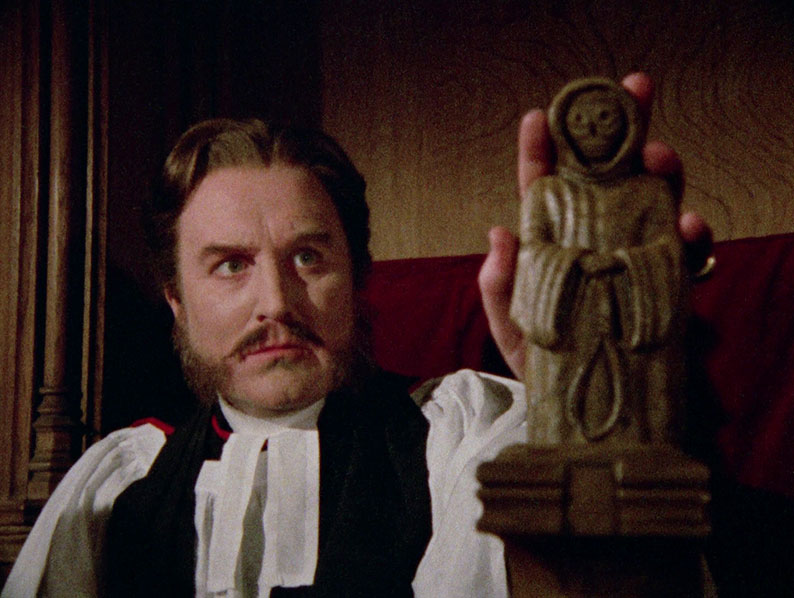
Ghost Stories for Christmas with Christopher Lee: ‘The Stalls of Barchester’ (29:20)
Ghost Stories for Christmas with Christopher Lee: ‘A Warning to the Curious’ (29:18)
In two programmes from the BBC's four-episode series from 2000, Christopher Lee plays M.R. James in his role of provost of King's College Cambridge at the dawn of the last century and relates two of his ghost stories to a small gathering of masters and students as they sit sipping sherry around a coal fire on Christmas Eve. Gold-tinted visuals of Lee and his attentive, over-privileged audience are intermittently peppered with stylised imagery from the tales themselves, none of which is a problem when you have a storyteller as compelling as Christopher Lee. A constant joy to listen to, he is also worth watching for his sometimes visually expressive delivery. Even the sinister notes of music do not detract from these very fine readings.
Disc 3
Audio Commentary on ‘Lost Hearts’ by Kim Newman and Sean Hogan
Kim Newman and Sean Hogan return for another lively commentary on a film they both hold in high regard, with Newman stating about the absence of remakes, “This gets this story so right that there hasn’t been a need to go back and do it again.” They note that this marked a slight change of direction for the series as it was the first to fall under the control of the BBC’s Drama department, and they discuss how actor Joseph O’Connor brings so much to character that was two-dimensional on the page. Elements that have a ring of the cinema of Mario Bava are identified, Lawrence Gordon Clark’s unsung status as a key director of British horror is championed, and they remark on the sympathy for working class characters in the series that is not in James’s original text. Hogan also suggests that the films in this series are beautifully crafted examples of how to adapt written works for television.
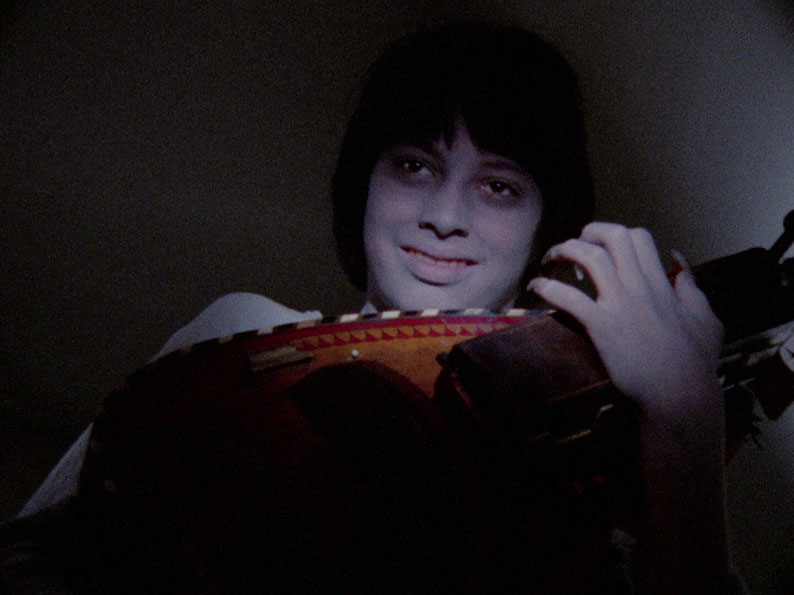
Introduction to ‘Lost Hearts’ by Lawrence Gordon Clark (10:52)
The ever-amiable Clark discusses the series’ move to the BBC's drama department and the changes this imposed (including a shorter shooting schedule), the tracking down of locations (a task he managed to retain for himself), working with child actors, and the use of hurdy-gurdy music. He also talks informatively about aspects of his camera technique, including the use of POV shots and how chance rather than planning provided the opening image of the carriage emerging from fog.
Also accompanying the set is a 38-page Bookletcontaining five fascinating articles and credits for all four films and the special features. The first essay, by playwright, actor and theatre director Reggie Oliver, examines James’s story, Oh, Whistle, and I’ll Come to You, My Lad,before making the case for the strengths of Jonathan Miller’s film adaptation, which he describes as “one of the finest ghost story adaptations ever created.” He also devotes a final paragraph to the 2010 remake, a more detailed appreciation of which is then supplied by Jon Dear, who admits to being dismissive of the film when he first saw it but has gained a new appreciation for it since. He makes a persuasive case, but having revisited the film myself, I’m still not completely sold. Author and horror specialist Jonathan Rigby gets to grips with The Stalls of Barchester, suggesting up front that director Lawrence Gordon Clark was an altogether better fit for adapting M.R. James for the screen than Jonathan Miller, and highlighting the strengths of this first official film in the series, which he clearly holds in high regard. As a freelance writer and amateur archaeologist, Adam Eastbrook would seem to be a perfect fit for A Warning to the Curious, and his appreciation of the film, its director, James’s original story, and the socio-political situation of the day (something also covered in Jon Dear’s commentary) makes for fascinating reading. Celebrated horror author Ramsey Campbell delivers a splendidly written case in support of Lost Hearts, setting the scene with a look at earlier James adaptations before the BBC “passed the haunted parchment to Lawrence Gordon Clark.” Campbell particularly praises screenwriter Robin Chapman and the use of location, and praises the film as, “unrepentantly English, deceptively leisurely and insidious.”
I suspect that those who fondly recall these delicious televisual tales of the supernatural will already have pre-ordered this box set, and frankly even if you have the whole collection on DVD, I’d grab this first volume and be ready for the others that I suspect are soon to follow. The impressive remastered HD transfers would be worth getting the set for alone, but not only do you get that, but all of the special features from the DVD editions and excellent new commentary tracks for all four films. It’s a marvellous set, and I can’t recommend it highly enough.
|